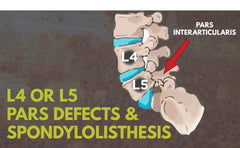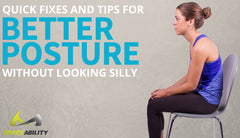Clavicle vs. Posture Braces: They Look Similar but their Uses are Very Different
The health benefits that come from good posture are endless, which is why people have taken interest in correcting their own. Not only do you look better when you are holding yourself with better posture, but you have the potential to relieve your back pain, migraines, create more oxygen flow throughout your body, and so much more. Braces are a great way to fix your posture because if worn correctly, they can change your muscle memory without interfering with your daily routine, helping your spine to straighten over time.
What’s interesting about posture braces is that they evolved from braces designed for treating clavicle fractures and breaks. When treating a clavicle injury, you want to stabilize your collarbone, so a brace was designed that wraps around your upper back in a figure 8 configuration. This figure 8 design immobilizes your clavicle, but it just so happens to also hold your shoulders back in a manner which keeps your upper back and spine straight.
When this dual use for the figure 8 clavicle support was discovered, many orthopedic brace retailers began marketing clavicle braces as posture supports. However, there are some features of a clavicle brace that may not be ideal for providing posture support, and vice versa.
That’s why we designed a new posture support that is intended specifically for posture correction. We also sell a figure 8 clavicle brace which can be used for both purposes, but most customers find it to be less comfortable and harder to adjust if they are wearing it strictly for posture improvement.

Clavicle Brace:
- The clavicle is one of the most commonly broken bones, especially among young kids playing high impact sports.
- The brace keeps the collarbone area immobilized after a simple break or fracture so the bone can heal.
- Figure 8 design wraps around both shoulders and the neck to hold the shoulders back and keep the clavicle stable.
- The small is 2"inch straps while the medium - XL is 3" inch straps. These straps are thicker to properly stabilize the collarbone.
- Only adjustable in the back, you will need someone to help you tighten the brace. This will help prevent you from injuring yourself further.
- Normally prescribed by a doctor for simple clavicle breaks that do not require realignment.
Posture Brace:
- Made to correct and improve posture
- Corrects posture over time for higher energy levels, more confidence, and prevention and alleviation of chronic back pain.
- Modeled after the Figure 8 brace with its backpack-like design and focus on pulling the shoulder muscles back for immobilization.
- Shoulder padding it only 1.5" inches thick, which makes the brace less cumbersome and more comfortable for underneath your armpits.
- Front adjustment allows you to make the brace tighter or looser by yourself.
- Start wearing in 30 minutes increments, gradually increasing up to 3 hours. Wear with little to mild physical activity.
Read more on posture correcting braces.
And if you’d like to take it one step further, join our BraceAbility team in the 21-day posture challenge.




